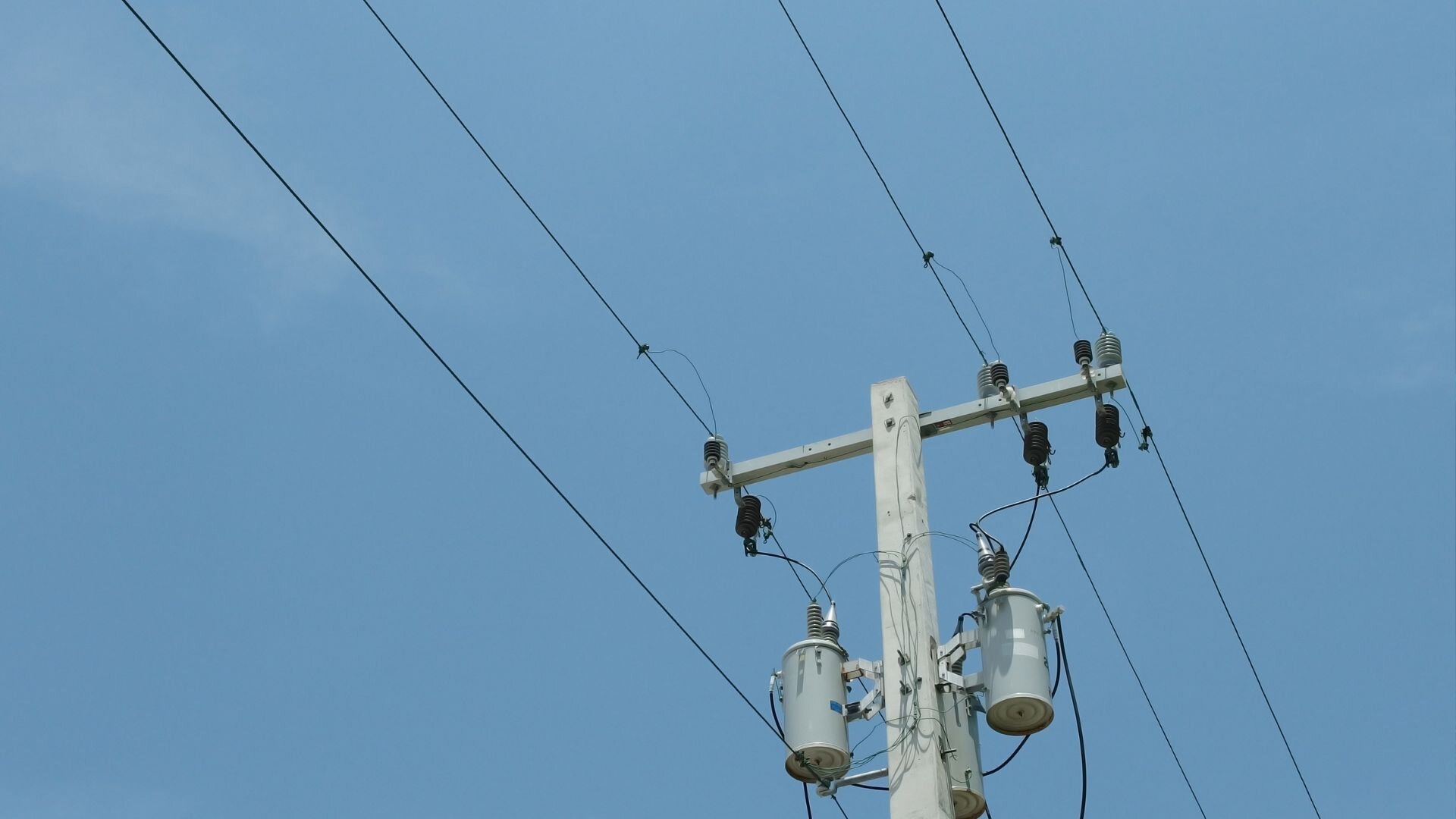Remember that time when the lights flickered like a disco, and then there was silence? You go to check the TV – black screen. Yep, a power surge just claimed your movie night victim.
Lightning strikes aren’t the only culprits behind power surges, though they’re quite significant. Issues like faulty wiring, overloaded circuits, and external grid problems can also cause surges out of the blue. These hidden dangers can be found lurking both inside and outside your electrical setup.
This blog is designed to help you get a handle on power surges. Learn more about residential wiring guide. We’ll explore the different types, potential damage, and most importantly, how you can protect your valuable electronics. From surge protectors to whole-home solutions and uninterruptible power supplies, we’ve got your gadgets covered. So, let’s jump in and ensure everything from your entertainment system to your air conditioner stays safe and sound.
Understanding Power Fluctuations
Voltage is the measure of the potential energy in an electrical system and is essential for the proper functioning of all your appliances. In Australia, the standard voltage for homes and offices is typically around 230 volts. This level is ideal for operating everything from large appliances like air conditioners to smaller electronic devices safely and efficiently.
But here’s the catch—voltage stability isn’t a sure thing. A power surge is a sudden spike that can shoot well beyond safe levels. This excess in voltage can be quite harmful, posing risks to your electrical systems and any devices plugged into them.

Understanding Power Surges
Power surges are brief spikes in electrical voltage that can occur in any electrical system. These surges can be caused by external factors like lightning strikes hitting the power lines or internal factors such as faulty wiring within your home. Regardless of their origin, power surges can introduce a massive surge of energy that can overwhelm and damage electronic equipment.
There’s a clear difference between power surges and outages. A surge is all about a voltage spike, while an outage means the power’s completely out. Outages can certainly disrupt your day but usually aren’t as harmful to devices, unless a surge happens when the power kicks back in.
Duration and Impact of Power Surges
Power surges can last for wildly different amounts of time. External surges, frequently due to lightning, are infamously short, lasting just microseconds, yet they pack enough energy to cause fires or trip breakers. Meanwhile, internal surges from high-powered devices or faulty gear can linger from a few milliseconds to several minutes, potentially damaging your devices’ internal components.
Protecting Against Power Surges
To prevent power surges, installing surge protectors is crucial. Surge protectors work by diverting excess energy away from the electronic devices connected to them. For comprehensive protection, high quality surge protectors and whole house surge protectors are recommended. These devices ensure that all your devices are shielded from the hidden dangers of power surges, whether they originate from external power sources or internal power disturbances.
In addition, for sensitive electronic equipment, an uninterruptible power supply (UPS) can provide both surge protection and a backup power source during a power outage. This dual function is essential in maintaining the operation of critical devices without interruption.
The Hidden Dangers of Power Surges in Australia
Understanding the different types of power surges that can occur in Australia is crucial for protecting your equipment.
- Lightning strikes: The most well-known cause, lightning can cause both direct and indirect surges. A direct strike on your house or nearby power lines sends a massive jolt through the electrical system. Even an indirect strike can induce a surge as electricity seeks the quickest path to the ground.
- Internal power surges: These lurk within your home’s electrical system. Faulty wiring, overloaded circuits from using too many appliances, or even a failing appliance itself can all cause a sudden increase in voltage. These internal surges might not be as dramatic as a lightning strike, but they can be just as damaging to your electronics.
- Power grid switching: The complex dance of the power grid can also be a source of power surges. When backup generators kick in during outages, or when the grid switches between high voltage lines, voltage spikes can occur.
- External power surges: External factors like downed power lines from storms, car accidents involving electrical transformers, or even small animals interfering with power lines can all trigger surges that travel through the grid and reach your home.
The consequences of a power surge can range from flickering lights and tripped circuit breakers to complete electrical damage to your computer, air conditioner, or any other sensitive electronic device. In worst-case scenarios, power surges can even lead to electrical fires.

Fortunately, there are steps you can take to safeguard your equipment:
- Installing surge protectors: These handy devices absorb excess voltage and divert it away from your electronics. Look for surge protectors with high Joule ratings for better protection.
- Uninterruptible power supply (UPS): For critical equipment like computers, a UPS provides both surge protection and temporary battery backup during power outages, preventing data loss.
- Power strips: While not technically surge protectors, using high-quality power strips with multiple outlets helps you avoid overloading circuits, a common cause of internal surges.
- Separate electrical phases: In some cases, particularly for high-value equipment, consulting a professional electrician about installing separate electrical phases can offer additional surge protection.
The Silent Threat: Consequences of Power Surges
While power outages are a noticeable inconvenience, the hidden danger lies in power surges. These unexpected spikes in electrical current can wreak havoc on your electronic devices, often with consequences that aren’t immediately apparent.
Power surges can damage electronics in two major ways. The most immediate is total failure. A strong surge can overload circuits, leading to a complete device breakdown. You might try switching on your computer post-storm and find it unresponsive—a classic sign of surge damage.
However, the more insidious threat comes from long-term damage. Even minor power surges, which might not cause a complete outage, can cause gradual degradation of your electronic devices’ internal components. Over time, these repeated power spikes can shorten the lifespan of everything from your fridge to your gaming console.
Many types of electrical equipment are vulnerable to power surges. Our homes are filled with at-risk devices, from computers and home entertainment systems (including TVs and gaming consoles) to appliances like fridges, washing machines, and microwaves. Even telecommunication equipment like modems and routers can be susceptible to power surge problems.
The sources of power surges can be both external and internal. External power surges, often caused by lightning strikes, can travel through power lines and into your home’s electrical outlets. Thankfully, lightning rods on houses help to divert these powerful strikes. However, as mentioned above, internal sources can also cause power surges. Faulty wiring, overloaded circuits, and even turning on appliances with large motors (like air conditioners) can create a momentary power spike.
The good news is that you can take steps to prevent power surges from damaging your valuable electrical equipment. Surge protectors, which plug into the wall and provide a buffer between your devices and the electrical current, are a simple and effective solution. They absorb the extra voltage during a power surge, protecting your devices from the damaging effects.
Safeguarding Your Electronics in Australia
Imagine this: you’re engrossed in work on your computer when suddenly, the lights flicker and a loud crack echoes. A power surge has just struck, potentially putting your valuable electronics at risk. While power outages are a common occurrence in Australia, power surges, those short bursts of excessive electrical voltage, can be far more dangerous.
Unlike a power outage where everything simply shuts down, a power surge can wreak havoc on your electrical equipment. These surges can happen due to various reasons, from lightning strikes to overloaded power lines. Even minor power surges that go unnoticed can cause internal damage, slowly degrading your devices over time. The good news is, you can take a proactive approach to safeguard your electronics with a surge protector.
Understanding Power Surges and Their Risks
Think of a surge protector as a superhero for your electrical appliances. When a power surge occurs, the surge protector diverts the excess voltage away from your delicate devices and safely channels it to a grounding wire. This essentially absorbs the extra jolt, protecting your equipment from the damaging effects of a power surge.
Choosing the Right Surge Protector for Your Needs
Here in Australia, you’ll find a variety of surge protectors available to suit your needs. A crucial factor to consider is the number of outlets offered. Do you need protection for a single device or multiple devices? Selecting a surge protector with enough outlets ensures all your valuable electronics are covered.
Another key consideration is the Joule rating. Measured in Joules (a unit of energy), this rating indicates the surge protector’s absorption capacity. In simpler terms, a higher Joule rating means the protector can handle a stronger power surge. For basic home use, a rating between a hundred and a few thousand Joules might suffice. However, for high-end equipment like computers, consider a surge protector with a higher Joule rating for maximum protection.
Some surge protectors come with extras like data line protection. This feature is especially handy for computers, guarding them against surges via phone or internet lines. Considering such factors helps you pick the perfect surge protector to keep your electronics secure.
Remember, a surge protector is an investment. While a power outage might just mean a temporary inconvenience, a power surge dangerous enough can damage or destroy your electrical devices. Taking control and safeguarding your electronics with a surge protector offers peace of mind, knowing your equipment is shielded from the unpredictable nature of electrical power.
Invest in Surge Protection Today
Power surges can wreak havoc on your electronics and even pose a fire risk. Don’t let a hidden danger become a costly headache. Enersol Electrical is your trusted provider of high-quality surge protectors and electrical services. Our experts can advise on the best protection for your needs and ensure proper installation. Contact Enersol Electrical today – safeguard your electronics and your peace of mind.